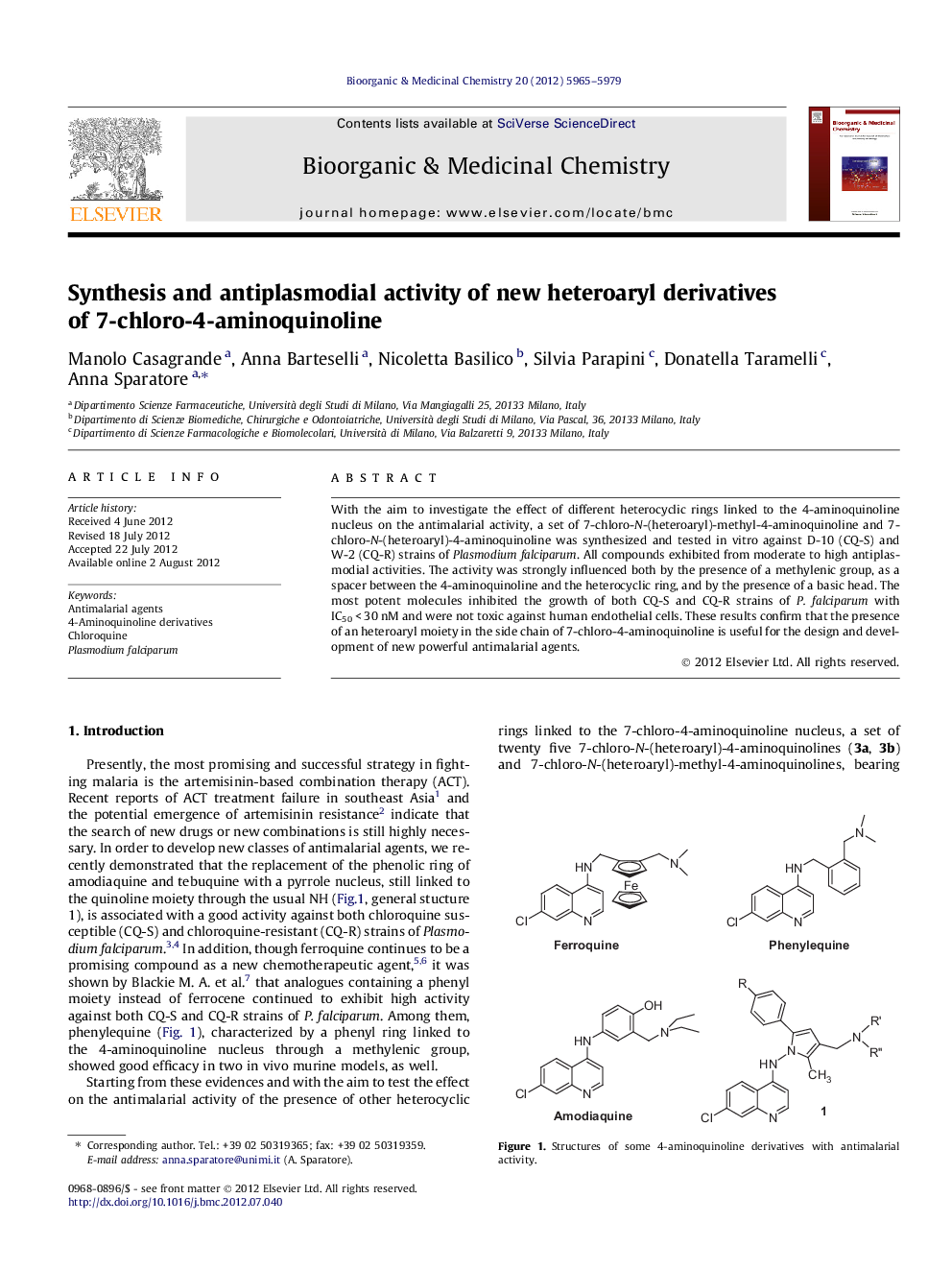| Article ID | Journal | Published Year | Pages | File Type |
|---|---|---|---|---|
| 10584738 | Bioorganic & Medicinal Chemistry | 2012 | 15 Pages |
Abstract
With the aim to investigate the effect of different heterocyclic rings linked to the 4-aminoquinoline nucleus on the antimalarial activity, a set of 7-chloro-N-(heteroaryl)-methyl-4-aminoquinoline and 7-chloro-N-(heteroaryl)-4-aminoquinoline was synthesized and tested in vitro against D-10 (CQ-S) and W-2 (CQ-R) strains of Plasmodium falciparum. All compounds exhibited from moderate to high antiplasmodial activities. The activity was strongly influenced both by the presence of a methylenic group, as a spacer between the 4-aminoquinoline and the heterocyclic ring, and by the presence of a basic head. The most potent molecules inhibited the growth of both CQ-S and CQ-R strains of P. falciparum with IC50Â <Â 30Â nM and were not toxic against human endothelial cells. These results confirm that the presence of an heteroaryl moiety in the side chain of 7-chloro-4-aminoquinoline is useful for the design and development of new powerful antimalarial agents.
Related Topics
Physical Sciences and Engineering
Chemistry
Organic Chemistry
Authors
Manolo Casagrande, Anna Barteselli, Nicoletta Basilico, Silvia Parapini, Donatella Taramelli, Anna Sparatore,
